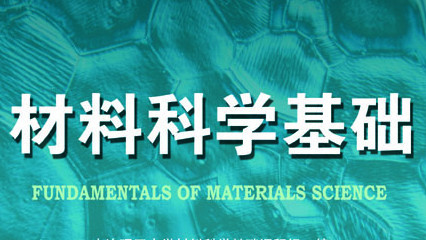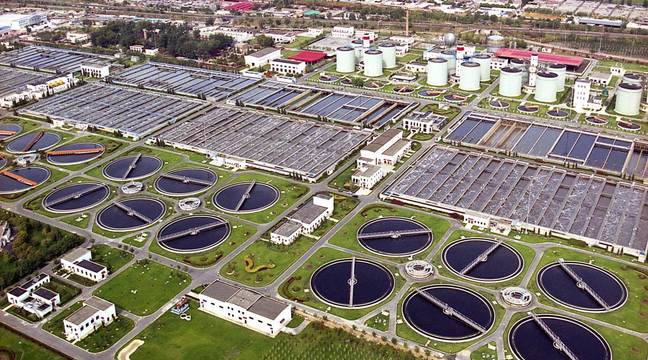
当前课程知识点:Water and Wastewater Treatment Engineering: Biochemical Technology > Chapter 6 Biological nitrogen and phosphorus removal process > Section 6.2 Biological nitrogen removal process and technology > Section 6.2 Biological nitrogen removal process and technology
返回《Water and Wastewater Treatment Engineering: Biochemical Technology》慕课在线视频课程列表
返回《Water and Wastewater Treatment Engineering: Biochemical Technology》慕课在线视频列表
同学们好,我们来介绍第六章的第二节,废水生物脱氮工艺与技术
重点介绍三个方面的内容
第一个是活性污泥法的脱氮的传统工艺
第二个是缺氧—好氧的活性污泥法生物脱氮工艺,也是我们常说的A-O工艺
第三点是介绍氧化沟的生物脱氮工艺
我们首先来看活性污泥法的脱氮的传统工艺
第一个工艺是三级活性污泥法的工艺,这里面给出了工艺的工艺流程
可以看出它是由三级的活性污泥法组成
第一级的活性工艺法,主要用来去除原水中间的碳水化合物
并且将原水中间的有机氮转变成为氨氮
第二级主要是一个硝化反应器,将第一级出水中间的氨氮硝化为硝酸盐
第三级是一个缺氧反应器,或者说是一个脱氮反应器
主要是将第二级中间转化生成的硝酸盐,通过反硝化作用,把它变成氮气
在这里面我们可以看出在第三级反硝化的过程中间,需要外加碳源
通常会投加甲醇,必要的时候
也会将原废水的一部分直接跨接到第三级,用作反硝化的碳源
这样的一个三级流程,我们可以看到它是由Barth首先开创出来的
在三级中间都各自具有独立的污泥的回流系统
它的优点是在这个过程中间氨化、硝化、反硝化是在各自的反应器中间独立进行
它的反应速率比较高,而且反应进行的比较彻底
但是当然它的缺点就是整个处理过程工艺流程比较长
设备也比较多,运行管理较为复杂
因此的话,有人就把三级的活性污泥法进行了简化
由此形成了这样的一个两级活性污泥法的脱碳工艺
第一级主要完成BOD的去除以及硝化反应,甚至包括氨化反应
因此的话,它的出水中间主要含有硝酸盐
硝酸盐进入后面的第二级进行反硝化
在这个过程中间同样需要外加碳源
通常也还是投加甲醇,或者是乙酸钠
必要的时候,也可以将一部分进水直接跨过第一级,进到第二级
用来为反硝化过程提供碳源,这样的一个两级的活性污泥法
跟三级相比有它的优点
主要是简化了工艺流程,但是,我们看到前面的两个流程
都需要外加碳源,因此的话,有人就将这个反硝化和硝化反应器
进行了一个工艺流程上的调整,把缺氧池的放在前面,而把好氧池放到后面
由此形成了这样一个缺氧好氧活性污泥的脱氮系统,也就是我们常说的A-O工艺
由此我们可以看到,进水首先进入反硝化池
进水中的有机物可以充分的用作反硝化所需要的碳源
当然这里面需要有硝化液的回流,所以我们可以看到
除了正常的污泥回流以外,还会有一个从好氧池的硝化液的回流
由这两部分回流,携带进入的硝酸盐
首先进入反硝化反应器,利用进水中间的碳源,进行反硝化
进水中间的有机氮通过反硝化反应器转化成氨氮
氨氮进入后续的反应器,后续的反应器是一个好氧反应器
在这个好氧反应器中间,将氨氮进一步的氧化生成硝酸盐
第一级反硝化中间没有用完的有机物也会在这级好氧反应器中间
得到进一步的降解,由此生成的硝酸盐
通过消化液的回流,以及通过污泥的回流
会进入到第一级缺氧反应器中间进行反硝化
这样的一个工艺,有的时候又称为“前置式反硝化生物脱氮系统”
在这样的一个工艺流程中间,我们可以看到,它具有一些优点
第一个是在反硝化反应过程中间
它所产生的一些碱度,可以补偿后续硝化反应消耗的碱度的一半左右
第二个是硝化的曝气池在缺氧池的后面
可以使得反硝化过程中间残留的有机物,能够得到进一步的去除
不需要在后面再增加后续的后曝气池
第三个工艺,我们来介绍的是氧化沟的生物脱氮工艺
这里给出了一个氧化沟的流程示意图
我们可以看到,氧化沟工艺跟普通的活性污泥法的工艺相比较
它有一个最大的特点就是,在氧化沟内循环流动的液体流量远大于进水的流量
因此的话,氧化沟内可以说是处在一种完全混合的状态
但是同时,在氧化沟内由于有曝气转刷安装位置的不同
会形成好氧区、缺氧区,因此在沟内
它又呈现出一定的推流式的特点
在好氧区会完成硝化反应
在缺氧区会完成反硝化反应
因此在氧化沟内就可以同时实现硝化和反硝化
实现对进水区间的氨氮的去除
这一节的内容就介绍到这,谢谢
-Section 0.1 Development Status of Wastewater Treatment Process
--Section 0.1 Development Status of Wastewater Treatment Process
-Section 0.2 Typical Processes of Wastewater Biological Treatment
--Section 0.2 Typical Processes of Wastewater Biological Treatment
-Section 1.1 Principles of wastewater aerobic biological treatment
--1.1 Principles of wastewater aerobic biological treatment
-Section 1.2 Principles and determination of wastewater biodegradability
--1.2 Principles and determination of wastewater biodegradability
-Section 1.3 Principles of wastewater anaerobic biological treatment
--Section 1.3.1 Principles of wastewater anaerobic biological treatment(1)
--Section 1.3.2 Principles of wastewater anaerobic biological treatment(2)
-Section 1.4 Principles of wastewater biological nitrogen removal
--Section 1.4 Principles of wastewater biological nitrogen removal
-Section 1.5 Principles of wastewater biological phosphorus removal
--Section 1.5 Principles of wastewater biological phosphorus removal
-Chapter 1 Homework
-Section 2.1 Basic concept of activated sludge process
--Section 2.1.1 Basic concept of activated sludge process
--Section 2.1.2 Basic concept of activated sludge process
-Section 2.2 Growth rule of activated sludge and its application
--Section 2.2 Growth rule of activated sludge and its application
-Section 2.3 Running mode of activated sludge process
--Section 2.3.1 Running mode of activated sludge process(1)
--Section 2.3.2 Running mode of activated sludge process(2)
-Section 2.4 Kinetics of active sludge process
--Section 2.4.1 Kinetics of active sludge process(1)
--Section 2.4.2 Kinetics of active sludge process(2)
--Section 2.4.3 Kinetics of active sludge process(3)
--Research and Development of Kinetic Model of Activated Sludge Process
-Section 2.5 Principle, calculation and equipment of aeration
--Section 2.5.1 Principle, calculation and equipment of aeration(1)
--Section 2.5.2 Principle, calculation and equipment of aeration(2)
-Section 2.6 Designing of activated sludge process
--Section 2.6 Designing of activated sludge process
-Section 2.7 Operation and management of active sludge process
--Section 2.7.1 Operation and management of active sludge process (1)
--Section 2.7.2 Operation and management of active sludge process (2)
-Chapter 2 Homework
-Section 3.1 Basic principle of biofilm
--Section 3.1 Basic principle of biofilm
-Section 3.2 Biofilter process
--Section 3.2.1 Biofilter Process (1)
--Section 3.2.2 Biofilter process (2)
--Section 3.2.3 Biofilter process (3)
-Section 3.3 Biodisk process
-Section 3.4 Biological contact oxidation process
--Section 3.4 Biological contact oxidation process
-Section 3.5 Aerobic biological fluidized bed process
--Section 3.5 Aerobic biological fluidized bed process
-Chapter 3 Homework
-Section 4.1 Oxidation ditch process
--Section 4.1 Oxidation ditch process
-Section 4.2 A-B process
-Section 4.3 SBR process
-Section 4.4 MBR process
-Chapter 4 Homework
-Section 5.1 Overview and characteristics of development of anaerobic biological treatment
--Section 5.1 Overview and characteristics of development of anaerobic biological treatment
-Section 5.2 Anaerobic digester
--Section 5.2 Anaerobic digester
-Section 5.3 Anaerobic contact process and anaerobic filter process
--Section 5.3 Anaerobic contact process and anaerobic filter process
-Section 5.4 UASB process
-Section 5.5 Other anaerobic biological treatment process
--Section 5.5 Other anaerobic biological treatment process
-Section 5.6 Operation management of anaerobic biological treatment process
--Section 5.6 Operation management of anaerobic biological treatment process
-Chapter 5 Homework
-Section 6.1 Introduction
-Section 6.2 Biological nitrogen removal process and technology
--Section 6.2 Biological nitrogen removal process and technology
-Section 6.3 Biological phosphorus removal process and technology
--Section 6.3 Biological phosphorus removal process and technology
-Section 6.4 Simultaneous nitrogen and phosphorus removal process
--Section 6.4 Simultaneous nitrogen and phosphorus removal process
-Chapter 6 Homework
-Section 7 Natural biological treatment process
--Section 7 Natural biological treatment process
-Chapter 7 Homework
-Section 8.1 Source, nature and treatment of sludge
--Section 8.1 Source, nature and treatment of sludge
-Section 8.2 Sludge thickening and digestive stability
--Section 8.2 Sludge thickening and digestive stability
-Section 8.3 Sludge conditioning, dehydration and incineration
--Section 8.3 Sludge conditioning, dehydration and incineration
-Chapter 8 Homework
-Section 9 Wastewater Discharge and Reuse
--Section 9 Wastewater Discharge and Reuse
-Chapter 9 Homework

